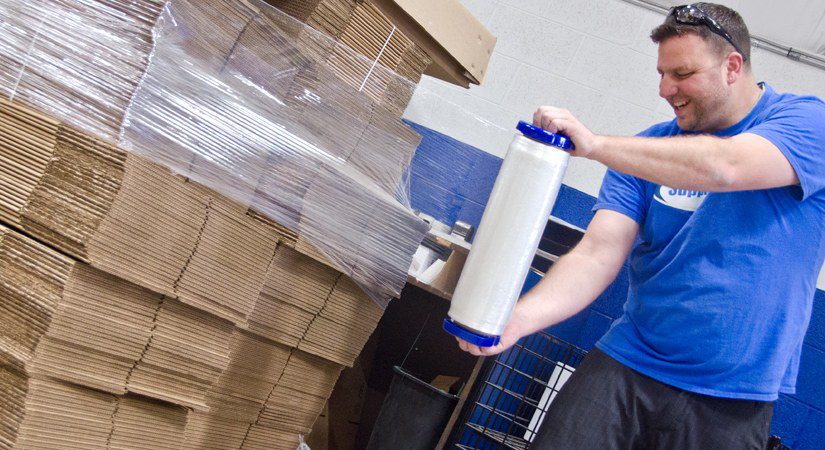Any company that ships pallet loads on a regular basis probably uses stretch film to wrap their loads in some capacity. High volume businesses with large warehouses more than likely use machines to quickly and efficiently wrap their loads with minimal labor. What do you do however, if your space is limited or your volume simply doesn’t justify large, expensive equipment? The odds are that you’re wrapping your pallets by hand. Although this practice is more physically demanding and time-consuming, there are a number of products on the market that make manual hand wrapping more accessible.
Standard stretch film is composed of a single layer of film extruded through various processes. Logically, heavier loads usually require a thicker film to handle the tension needed to keep the load secure, and the more resin used in a film, the higher the cost of the product. Increasing resin costs slowly drive the price of standard stretch films up and up, digging deeper into your shipping supply budget. One way to help alleviate these rising costs is to use a multi-layered film. By combining multiple layers of a much thinner film, you can attain the same load retention as a standard high gauge wrap while using significantly less resin. This results in a product like PowerSTRETCH Stretch Film that costs much less than traditional wraps, while handling the same sized loads. Getting more performance for less money is a sure fire way to increase profitability.
In order to get the most from standard stretch film, users need to apply constant pressure while walking around the load, making sure to stretch the film to its’ full usable length. This persistent tension takes its’ toll on the user after continued use. Also, failing to stretch the product sufficiently results in wasted film and less secure loads. Pre-stretched film is one way to avoid these pitfalls on lighter loads (less than 1200lbs). Since the product is already at its’ optimal length, much less physical pressure is needed to properly apply, resulting in less user fatigue as well as significantly less waste.
Although there are several stretch film dispensers on the market, most users who manually hand wrap their pallets simply put their hands in each end of the corrugated tube, or core, and allow the roll to slide in their grip to apply the film and tighten their grip for tension at the appropriate times. This continued practice can do a number on your hands, usually prompting users to wear protective gloves, adding yet more cost to the process. Some businesses use extended core stretch film, which uses a longer corrugated core that provides handles on each side for easier use. While this addresses some of the aforementioned downfalls of hand wrapping, these products also add more cost. Hand Savers are the most cost-effective way to give the user control over the application and tensioning of the film while eliminating wear and tear on your hands or the additional recurring cost of hand protection. These useful devices go in either end of the core and allow the roll to spin for easy dispensing, however they also have levers that easily stop the roll and apply tension when needed. For less than the price of one pair of leather gloves, hand savers provide continued protection with all of the control of wrapping by hand.
A company’s ability to profit and grow often relies on its’ ability to make the most of its’ resources. If you don’t have the luxury of expensive pallet wrapping equipment in your shipping facility, you can still use technology combined with best practices to minimize the cost and user fatigue of manually hand wrapping your loads.

